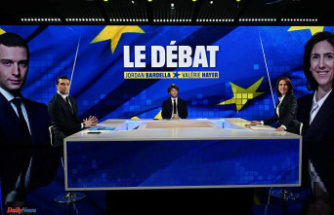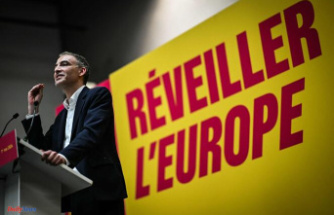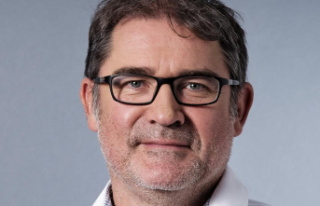Around 3800 meters below the sea surface you can watch how the Titanic disintegrates. How it rusts and how underwater creatures attack it. A Karlsruhe computer scientist has now used a mission to the wreck for something completely different.
Karlsruhe (dpa/lsw) - During an expedition to the sunken Titanic, computer scientist Alex Waibel tested speech technology with a video function from a submarine. He sent texts to the surface via sonar, which were then converted into spoken language and video using artificial intelligence (AI). The researcher from the Karlsruhe Institute of Technology (KIT) reported to the German Press Agency that they got through some of the dialogues. "We could see that this really works."
The Titanic sank on her maiden voyage in 1912. The passenger ship lies at a depth of around 3800 meters in the Atlantic. Sparks are not possible from there because of the masses of salt water, explained Waibel. Sonar, however, only allows for an "improbably low bandwidth". That's just enough for text messages.
The tested technology works as follows: Before the dive, Waibel and colleagues involved recorded videos and voice samples of themselves. If text messages now reach the computer system, the AI implements this in such a way that it looks and sounds on the video as if the person himself is speaking - including lip movements.
What sounds like a PR-laden gimmick by tech-savvy scientists, especially in connection with the Titanic expedition, has a serious background: "There are enough places in the world where the bandwidth is so bad that only text transmission is possible", said Waibel. With the new technology, video communication could one day become possible.
But the mission also revealed the pitfalls: one of two sonar devices failed, said Waibel. Therefore, only part of the dialogue could still be transmitted from the submarine. He also came up with new ideas: U-boat crews worked a lot with abbreviations to compress texts. Another goal is to shrink the technology so that it fits in a pocket. All in all, Waibel was satisfied: "A good start has been made."
Incidentally, one of the biggest challenges in converting the texts into videos has nothing to do with the language, the scientist revealed: "If the person doesn't say anything, it's surprisingly difficult." Then the lips have hardly moved in the videos so far.
Waibel was part of a larger mission involving biologists and archaeologists, among others. There are always such expeditions to the Titanic.
For more than 30 years, the researcher has been dealing with AI and machine learning in language and communication technology. Among other things, he developed the world's first automatic simultaneous translation service at a university, according to KIT. The "Lecture Translator" automatically records the speaker's lecture and simultaneously translates the speech signals into English, which is then displayed as subtitles. Students without knowledge of German can follow the lecture via laptop, smartphone or tablet.












